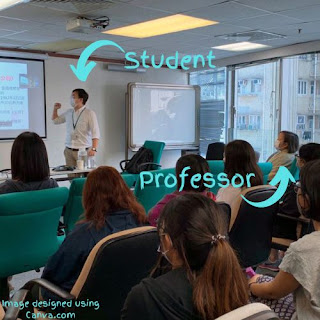Dealing with Tragedy in the Classroom (Summary and Video Demonstration)
As a college professor, you will inevitably face tragedy of some sort in the classroom. That's the bad news. The good news is that I think tragedy can be dealt with following the same principles that are used to facilitate meaningful learning. These are the principles I talk about over and over again on my website, and I talk about them in detail in my book Forgetting How to Teach, which is currently under review.
Those principles are CONGRUENCE, EMPATHY, and PRIZING. I have taken these from Carl Rogers, and I have made them my own.
More posts about Carl Rogers and teaching: Interview with Rogers, Nondirective teaching of Rogers, Surprises during Nondirective teaching, Nondirective teaching in an online course.
Congruence means that my outward behavior matches my feelings. Another word for this might be "authenticity" or the Latin bona fide (Good Faith). In practice, this means being who I am in the classroom. If I have just come from a long period of responding to student comments and emails and giving feedback on my computer, then I will be the zombie that I feel like in the classroom. That way students don't have to wonder why I'm having trouble focusing.
In the context of a tragedy, this means sharing my own concerns--be they for my personal safety or my concerns about students. If I hear about a shooting at a party and I have trouble sleeping, then I share that. Etc.
If I don't want to talk about the tragedy--if it makes me feel uncomfortable or I worry that the classroom isn't the place for it--then I will try to share this as honestly as I can. E.g., "I know that something terrible happened, and I imagine that you are all thinking about it right now. However, I also worry that I might get into some trouble were I to openly discuss it with you." And so on. Congruence means being transparent about how you feel.
The opposite of congruence is putting on a show or misrepresenting how you feel or think.
Empathic Listening. College professors are excellent at listening and responding to information. Some college professors are good at listening and responding to other human beings in their humanity. This is something I am getting better at, but I would put myself somewhere near the lower third in terms of empathic ability.
Empathic listening means listening to, in this case, a student from the student's perspective. It is listening for the meaning that is communicated by this student. The difference can be seen in the following:
- A confident student says "You multiply base times height."
- A timid student says "You multiply base times.... height?"

Comments
Post a Comment